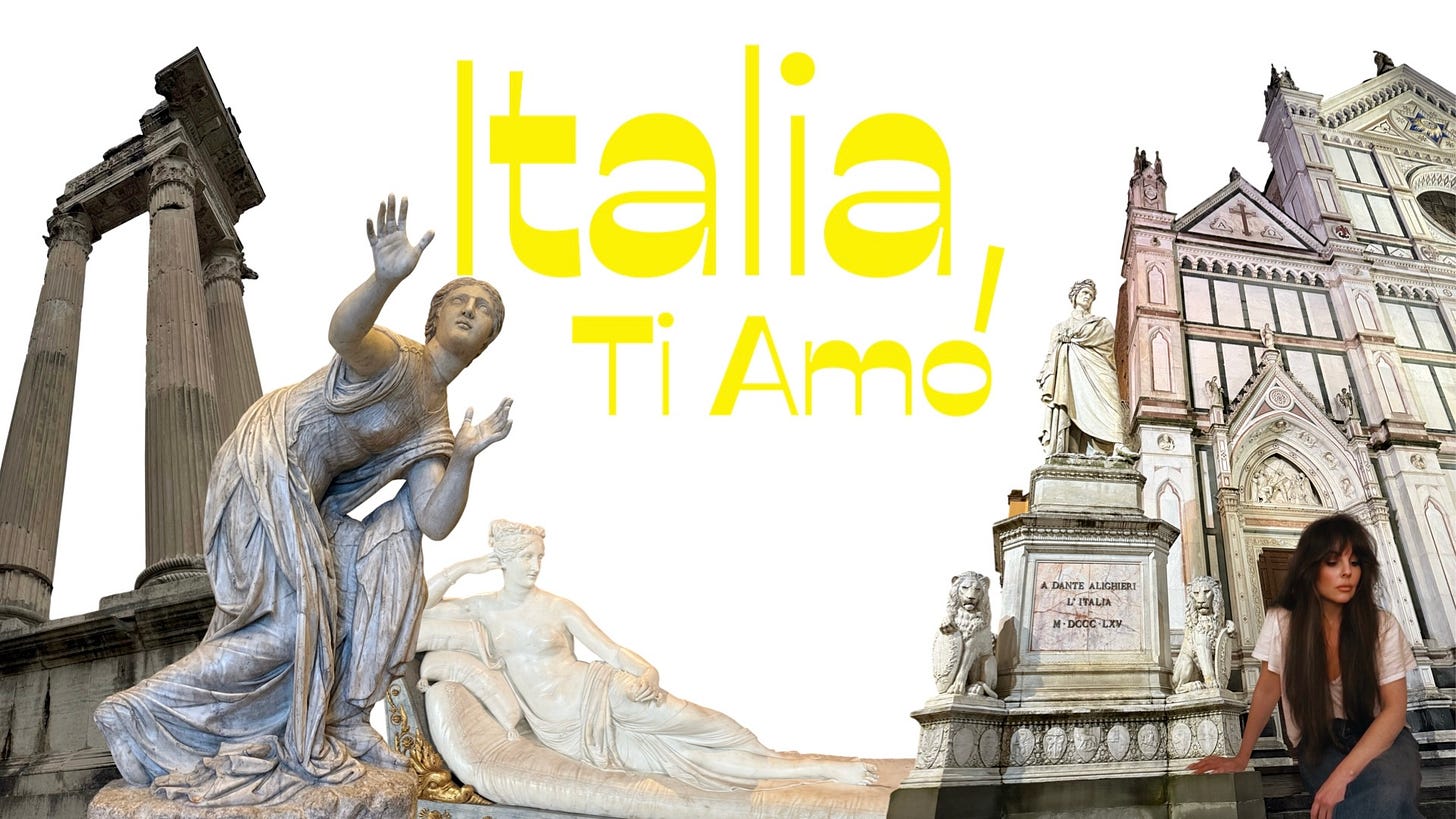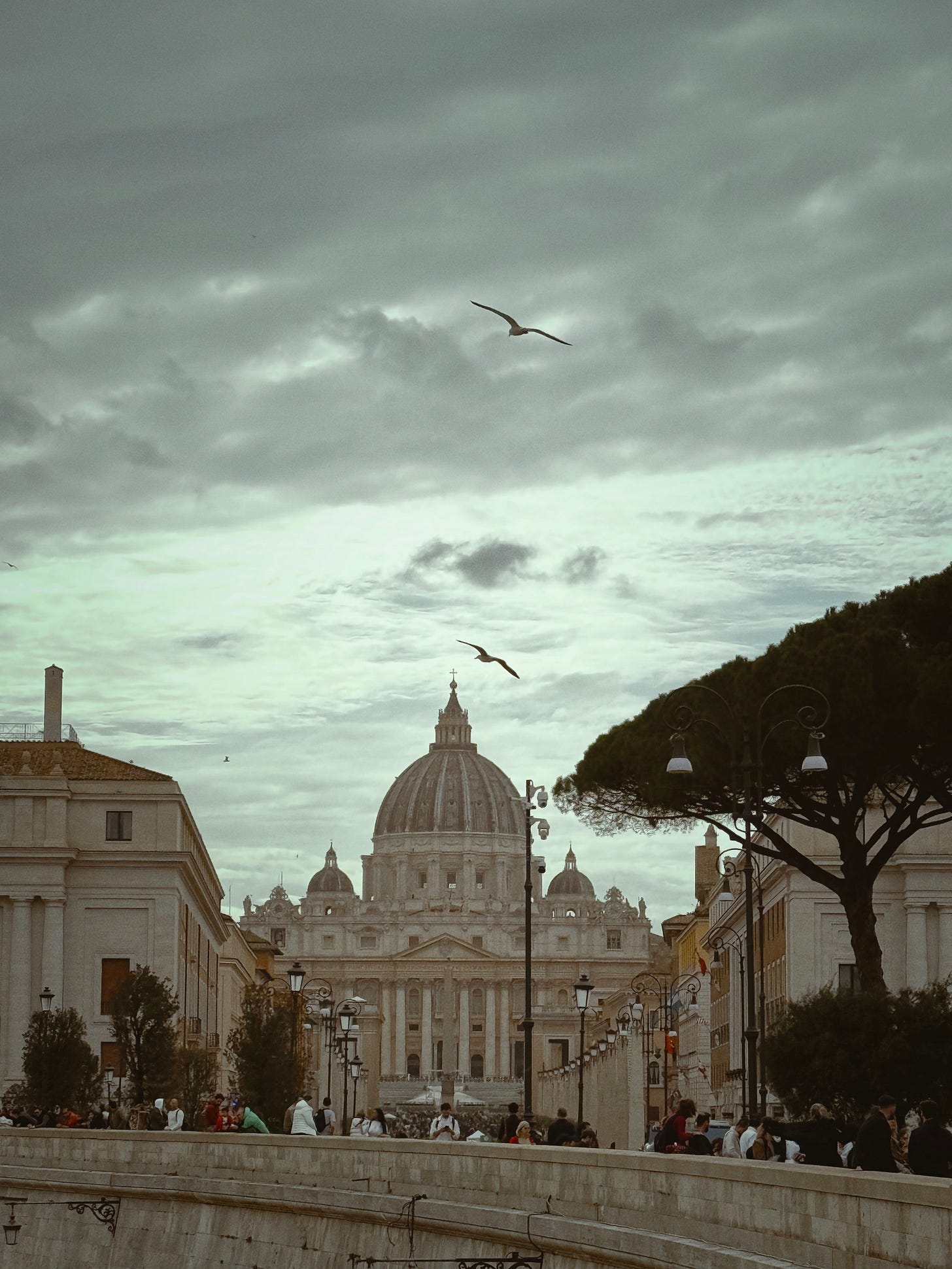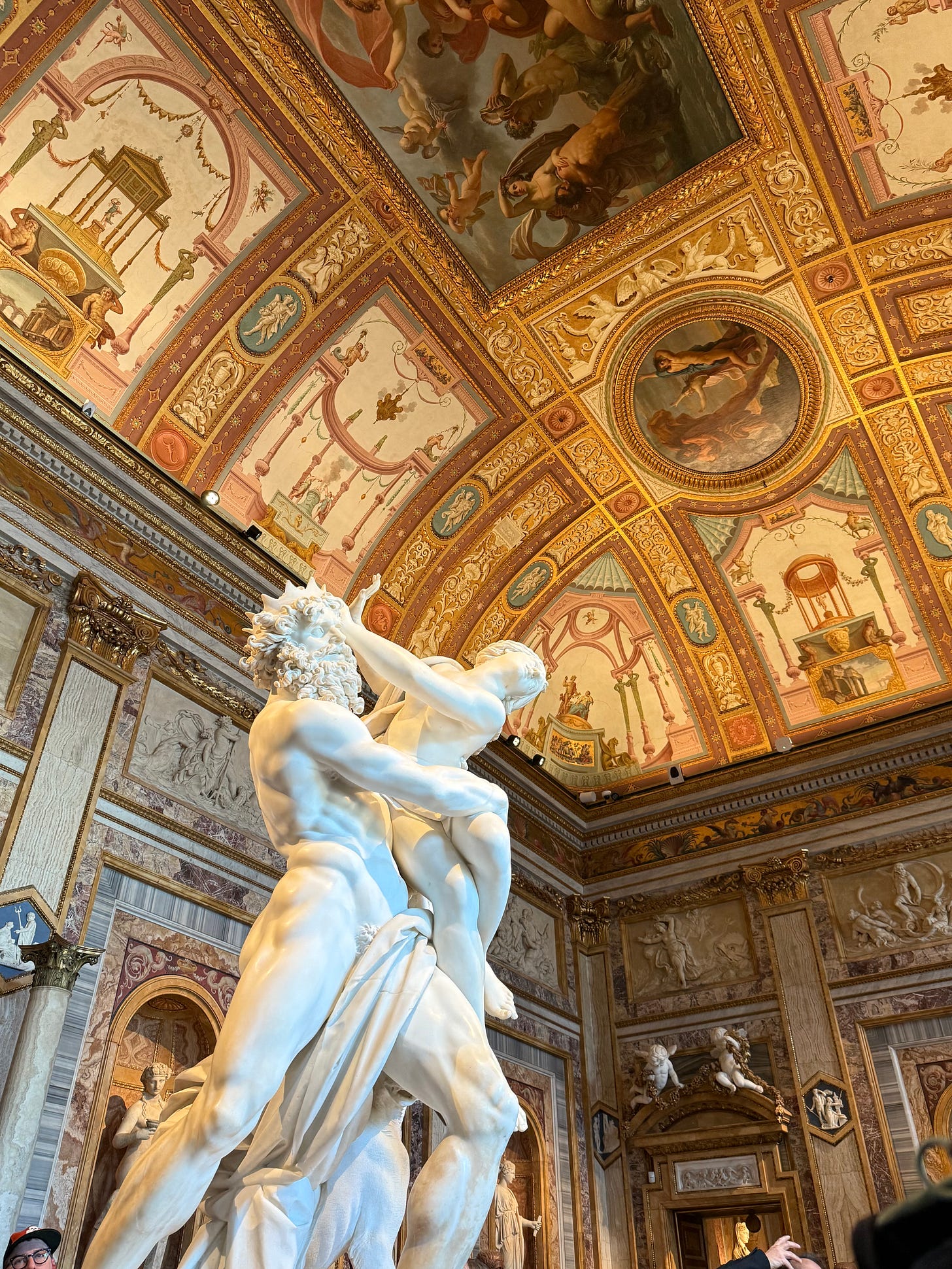One of the more consistent idiosyncrasies of the Jazmine unit is that I have never required a paradox to resolve itself to feel at peace. I am quite comfortable allowing oppositional ideas to sit nicely together in the garden of my perception and drink from the same glass. And so it was that, as my trip to Italy approached, I found a curious inquiry rising like incense in the darkened sanctum of my awareness: how would the force that I have become meet with the traditional, religious, and patriarchal expressions in my ancestral homeland.
One of the most fascinating tensions I carry is my love for the aesthetic of the old world without surrendering to its ideology. Many people who break from traditional systems reject everything associated with them, but I do not. I can kneel before the beauty of a gilded reliquary without subscribing to the dogma behind it. I can admire the grandeur and opulence of a palazzo while knowing the wealth that sustained such magnificence was often constructed atop systemic inequality and codes of silence.
It’s no secret that Italy is a place where patriarchal power and tradition are deeply entwined, whether through the Catholic church, subversive organizations like the mafia, or the dynastic design houses that have shaped global culture. These lineages of influence all share a penchant for myth-making, gatekeeping, and legacy, and are run by men whose names became institutions. The artist in me turns to the world of design as an example: Gucci. Valentino. Dolce & Gabbana. These brands are their own kind of church—vessels of beauty, yes, but also monuments to continuity, hierarchy, and the performance of masculine genius. Far from irrelevant, they are relics. Beautiful ones.
Despite its patriarchal foundations and an indefatigable machismo, Italy has always been haunted by the specter of the divine feminine. The Madonna—silent, suffering, and sacred—stands at the heart of Catholic iconography. She too is a figure of contradiction: exalted yet powerless, worshipped but voiceless, holy yet hollowed of her wildness. She is purity incarnate, still her presence alone suggests an older, deeper lineage of goddess worship, a time before the Church subsumed the feminine into a palatable, male-curated image of devotion. Before the great sanitizing of Her, there was the cave-dwelling oracle, the milk-blooded priestess. That lineage never died—it went underground, like all true mysteries do.
For clarity’s sake, let me note: the feminism I inhabit is not a blunt-force, castrating, rage against the machine. I don’t burn down for the sake of fire. I’m far more interested in the alchemy of seeing clearly. I understand, intimately, the beauty and necessity of both the masculine and feminine principles—not as gendered roles, but as sacred forces. The feminine is primordial, creative chaos—she brings the unmanifest into form. The masculine is conquering and containing—it exists to serve and uphold the flowering of the feminine; creating the space for Her to circulate and to birth whatever she is ripe and destined to carry. What masculinity brings forth is directly tied to the quality of feminine energy with which he is entangled. Without her, he has no muse. Without him, she has no temple. Shiva and Shakti are not in opposition; they are in eternal, erotic synthesis.
As my dear friend Chris would say, “It’s only because men built the container of modern society that women can afford the time to critique it.” He’s not wrong. You’ll get no argument from me that the force of being that facilitated the creation of the very technology I am using to broadcast an analysis of patriarchy is the same force that grants me the peace of mind and space to do so without having to defend myself, naked and alone in the woods. It was the masculine force that made the roads, the networks, the tools—and through them, provided the luxury for discourse. But the deeper truth is that all structures, however monumental, are subject to the frequency of the consciousness behind them. And that frequency is changing. Consciousness is shifting to a place of reconciliation and reverence for these two forces, inseparable in a divine synthesis of being/becoming, and as a result, the ancient institutions—be they religious, political, or cultural—will be reformed not by decree, but by vibration. Matter follows frequency. And as this new frequency rises, what has seemed irreconcilable amid a roaring gender war and centuries of grievances hurled between the sexes, will melt into a deeper awareness of wholeness.
What we are at the precipice of now is not merely the collapse of outdated systems, but the slow, almost imperceptible emergence of a new mythos—one in which masculine and feminine energies are no longer cast as adversaries, but as co-conspirators in the unfolding of a more integrated consciousness. This is not about reversing the polarity of power, but about dissolving the illusion that power must exist in opposition. It requires a subtler kind of revolution—one not waged in the streets, but in the inner realms, where the eye of truth is awakened. These deeper harmonics live in me, not simply as an observation of paradox or a theory of balance but as the gilded scales of divine justice cosplaying in the flesh of a woman. I move through the world as the living conversation between what once seemed irreconcilable; a sacred provocateur inviting you to “hold these two opposing truths for a moment” while I take your picture and post it to the Akash forever and ever, Amen.
To stand at the crossroads of reverence and irreverence is an alchemical posture—neither submitting to the past nor rejecting it, but seeing it in its full complexity. This is a rare and powerful stance, one that disrupts the usual dichotomies that shape identity, spirituality, and history. Most people either romanticize the past or reject it wholesale. In contrast, I see it for what it is: an extraordinary, decadent, violent, breathtaking accumulation of human endeavor. I am not here to dismantle the cathedral or to genuflect before it. I am here to listen to its stones and honor the hands that built it, with echoes of past devotion, ambition, and longing still reverberating amid altar and fresco. I carry no illusions about its cost—but neither do I deny its beauty.
I am not the Madonna behind glass. I am the Sybil in the cave. I do not await veneration but instead whisper truths that need no validation and move with a kind of sovereign detachment, both immersed and uninhibited, deeply present but answering only to myself. These ancient cults hold no power over me—not from an egoistic recoil, but rather from a deeply penetrating vision of the truth lying beneath it all and an internalization and realization of the Godhead expressing freely. It’s all just another movement in the dance, another gesture in the infinite conversation between the seen and unseen. The relics, the architecture, the art, the ceremony—they are the crystallized echoes of a divine conversation, moments where the formless took form before dissolving into itself once again. I am not the saint the Church canonized. I am the self-sovereign mystic who bows to nothing and no one, yet sees the sacred everywhere. I speak with the voice of the unnamable and carry the flame of those that came before me for those who are yet to arrive.
And so I return. Not as a tourist of beauty or a critic of systems. But as a witness to the dance. I am simply here, awake, present to it all, neither lost in nostalgia nor bound by critique. That is the real power. I walk the ancient streets of my ancestors not to reclaim something lost, but to offer something remembered: that the sacred cannot be owned, that the divine feminine was never meant to be tamed, and that what is most powerful is not the structure, but the silent presence that watches it rise and fall.
What began in my awareness as an embodied contradiction has revealed a profound synthesis… and I am at peace in the land of my Father.








Wow! The way you write is as beautiful as the monuments you speak of. I went through a phase of denying anything tied to the church. I have since realized that multiple things can in fact be true at once. This was amazing, thank you! Xx
What an amazing essay! Being able to hold paradoxes and seemingly conflicting ideologies without needing to resolve the conflict is such a superpower. Beautifully written.